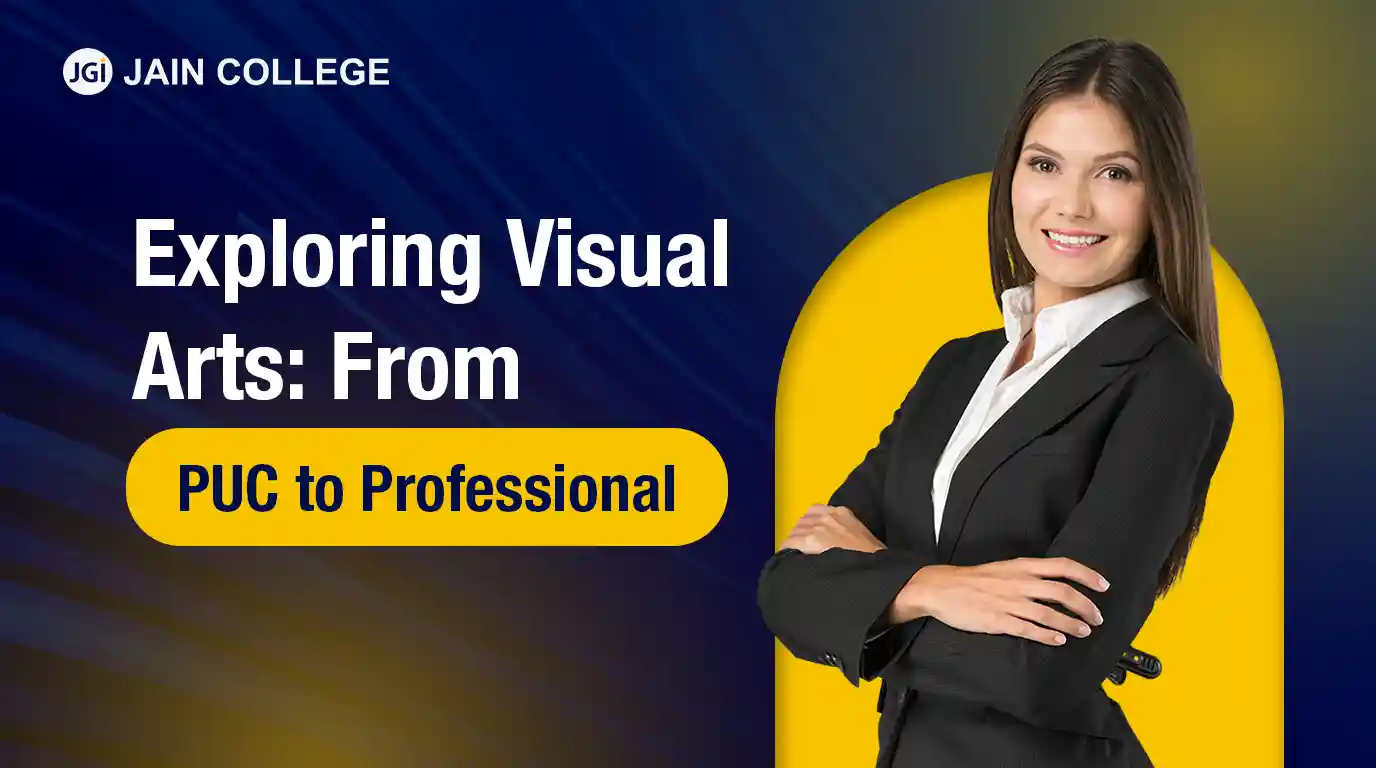
Visual arts serve as a vibrant medium of expression, communication, and creativity. From PUC (Pre-University Course) to professional stages, pursuing visual arts is a journey filled with exploration, learning, and immense potential. This guide will take you through the essentials of visual arts, career options, and how to transition from being a student to a professional in the field.
Visual arts encompass a wide range of creative disciplines that are visually experienced. These include traditional forms like painting, drawing, and sculpture, as well as modern mediums such as photography, graphic design, and digital art. Visual arts go beyond aesthetics, often serving as a reflection of societal trends, personal narratives, and cultural values.
If you’ve completed your PUC and are wondering about career options, visual arts offer numerous opportunities:
Success in visual arts requires a mix of technical skills and personal attributes, including:
Several educational paths are available to explore visual arts after PUC:
Visual arts programmes are designed to equip students with both technical skills and conceptual understanding. Common subjects include:
Some of India’s top institutions for visual arts include:
Visual arts professionals can explore various roles, such as:
| Aspect | Visual Arts | Performing Arts |
| Focus | Art forms like painting and design | Dance, drama, and music |
| Medium | Canvas, digital tools, sculpture | Stage, instruments, and voice |
| Career Options | Graphic design, animation | Acting, choreography, directing |
Technology has revolutionised visual arts, enhancing both creativity and productivity. Key innovations include:
These tools cater to various needs within visual arts, from 2D and 3D design to animation and video editing. Choosing the right software depends on your area of focus and the type of projects you intend to create.
| Software | Primary Use |
| Adobe Photoshop | Image editing, digital painting, photo retouching, and graphic design. |
| Adobe Illustrator | Vector graphic design for logos, illustrations, and scalable artwork. |
| CorelDRAW | Vector graphic creation for illustrations, brochures, and branding. |
| Procreate | Digital painting and sketching, optimised for iPads. |
| Autodesk SketchBook | Sketching and drawing with professional-grade tools. |
| Blender | 3D modelling, animation, rendering, and visual effects. |
| Autodesk Maya | Advanced 3D animation, modelling, and rendering for movies and games. |
| Cinema 4D | Motion graphics, 3D modelling, and visual effects for film and design. |
| ZBrush | Digital sculpting and detailed 3D modelling for characters and objects. |
| Affinity Designer | Vector and raster design for digital painting and illustrations. |
| Krita | Open-source software for concept art, digital painting, and 2D animation. |
| Clip Studio Paint | Illustration, manga, and animation creation, popular among comic artists. |
| Adobe After Effects | Motion graphics, compositing, and visual effects for video production. |
| Canva | Easy-to-use platform for graphic design and content creation. |
| Adobe Premiere Pro | Video editing and post-production for films, web, and multimedia projects. |
| Final Cut Pro | Professional video editing for Mac users. |
| ArtRage | Realistic painting tools for traditional art effects in digital formats. |
| Substance Painter | 3D texturing and painting for detailed surface designs in 3D models. |
| GIMP | Open-source alternative to Photoshop for photo editing and graphic design. |
| Inkscape | Open-source vector design for logos, illustrations, and infographics. |
| Figma | Collaborative UI/UX design and prototyping. |
| Sketch | User interface and web design, especially for prototyping. |
| Unity | Game design, interactive 3D environments, and AR/VR development. |
| Unreal Engine | Advanced game development, cinematic experiences, and 3D visualisation. |
| Corel Painter | Natural-media painting software for traditional-style art creation. |
A strong portfolio is essential for showcasing your skills to potential clients or employers. Here’s how you can build one:
While rewarding, visual arts careers can present challenges:
Earnings depend on your role and experience. Here’s an overview:
| Role | Starting Salary (INR) | Experienced Salary (INR) |
| Graphic Designer | 2,50,000 - 4,00,000/year | 6,00,000 - 12,00,000/year |
| Animator | 3,00,000 - 5,00,000/year | 8,00,000 - 15,00,000/year |
| Art Director | 5,00,000 - 8,00,000/year | 12,00,000 - 20,00,000/year |
Internships provide invaluable industry exposure and help you:
| Aspect | Fine Arts | Digital Arts |
| Medium | Traditional (paint, clay) | Digital (software, tablets) |
| Focus | Artistic expression | Technology-driven creativity |
| Career Options | Painter, sculptor | Animator, game designer |
Funding your visual arts education can be achieved through:
Visual arts offer a blend of creativity and technical expertise, making it an exciting field for PUC Arts students. With diverse career paths, advanced technology integration, and opportunities for self-expression, this field is perfect for those passionate about art. By selecting the right course, building a strong portfolio, and staying updated with industry trends, you can turn your artistic dreams into a fulfilling career.
Frequently Asked Questions (FAQs)PUC Arts is the ideal starting point, followed by a degree or diploma in visual arts from a recognised institution.
Yes! Most courses start with foundational skills, making it accessible for beginners.
Visual arts professionals can work in advertising, animation, fine arts, or design, among other fields.
Choose fine arts for traditional mediums and digital arts for technology-driven creativity.
Yes, platforms like Coursera, Udemy, and Skillshare offer excellent online courses in visual arts.

JAIN PU College, a part of the renowned JGI Group, is committed to empowering students with quality education.
Beyond academics, the college ensures its online content reflects the same standard of excellence. Every blog and article is meticulously vetted and proofread by subject matter experts to ensure accuracy, relevance, and clarity. From insightful educational topics to engaging discussions, JAIN PU College's content is crafted to inform, inspire, and add value to its readers, reflecting the institution's commitment to intellectual growth and innovation.
View all Blogs